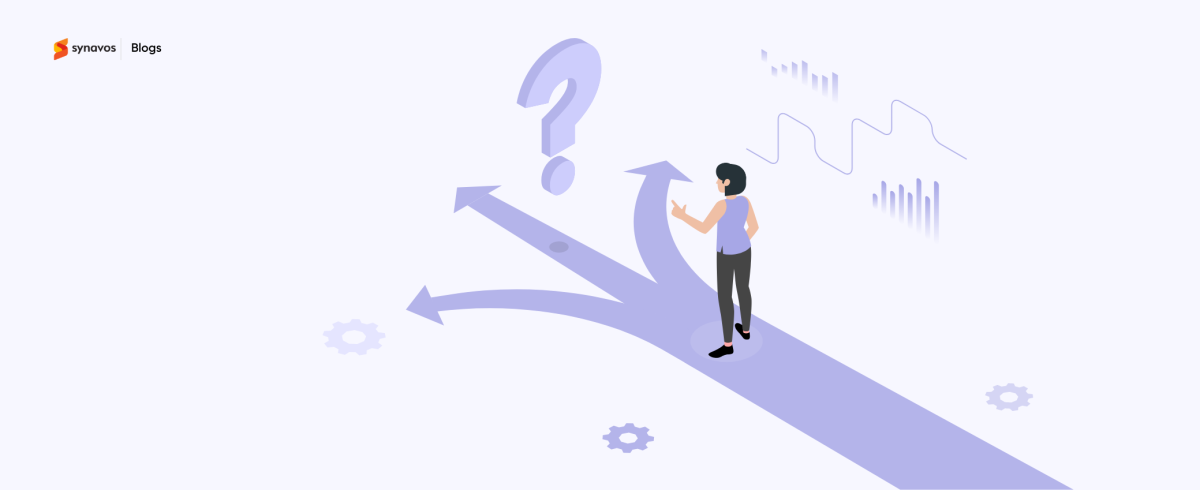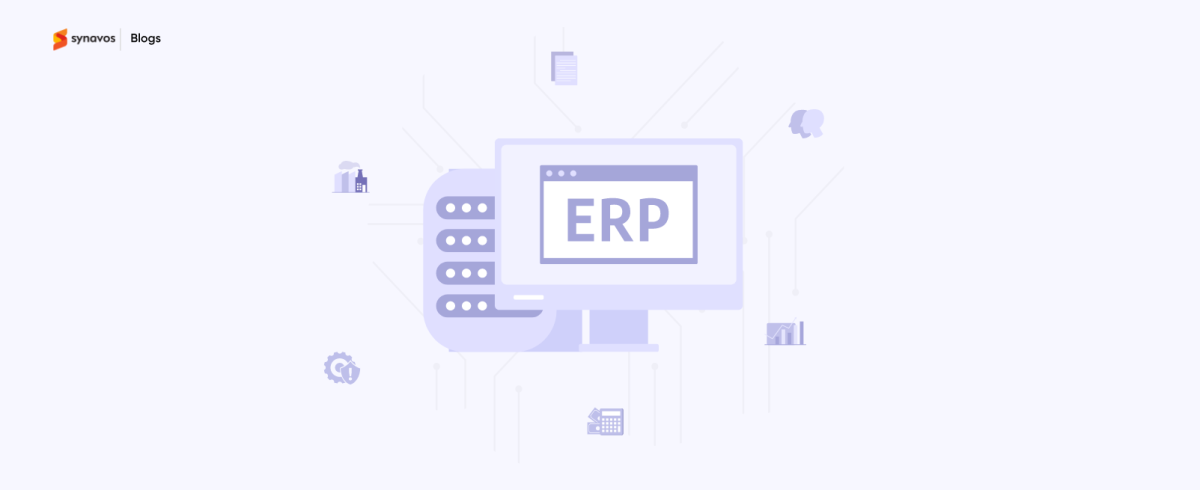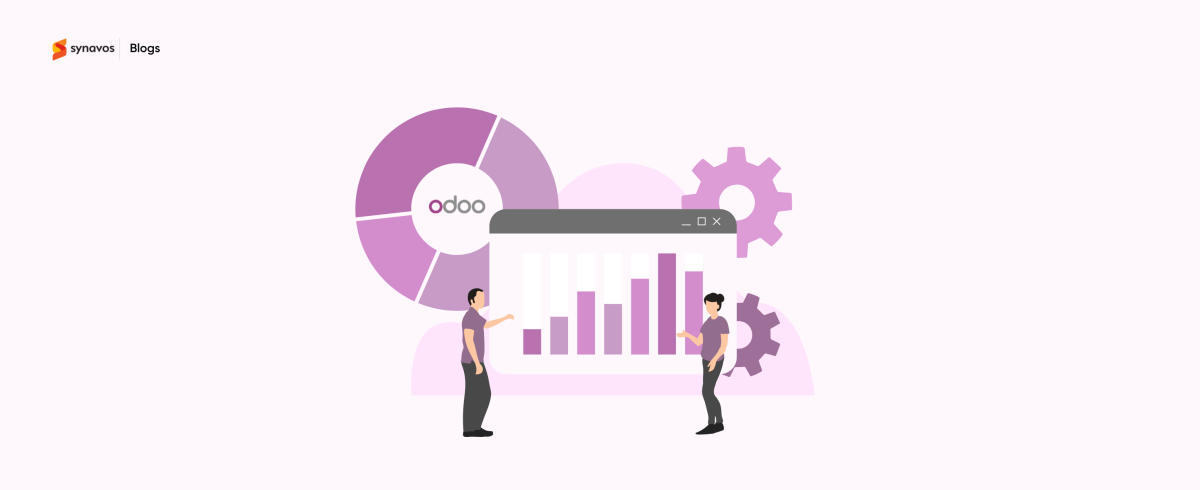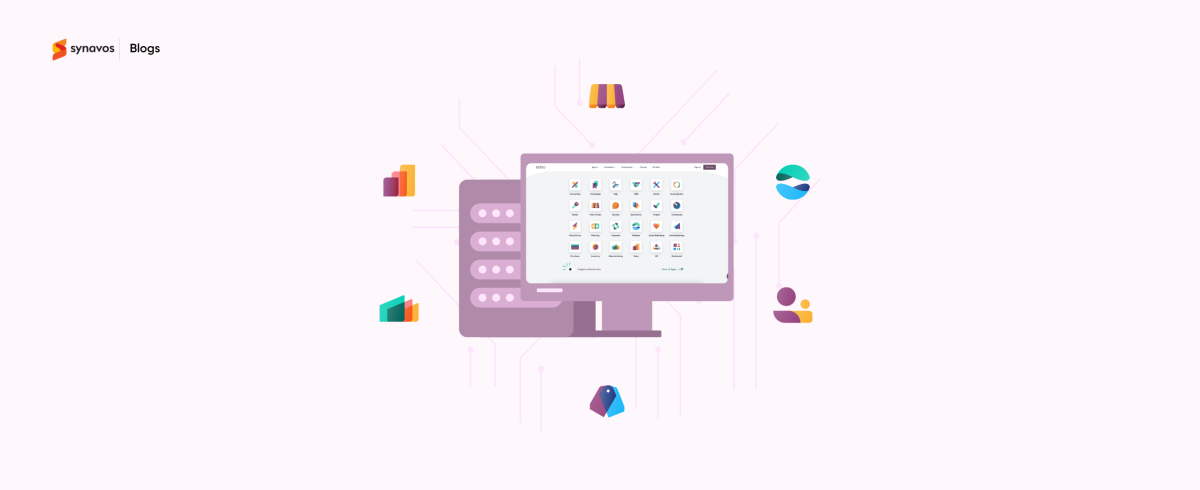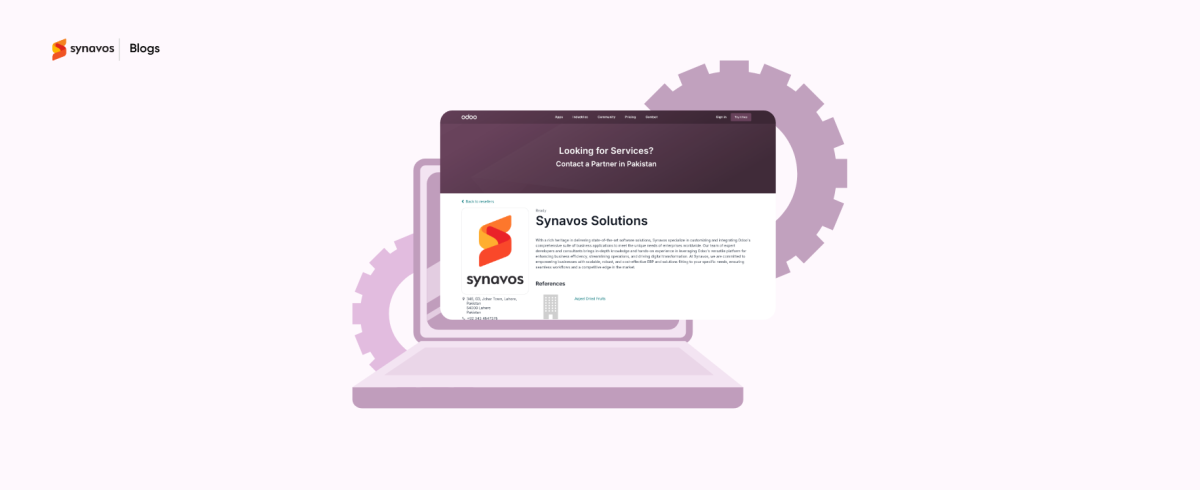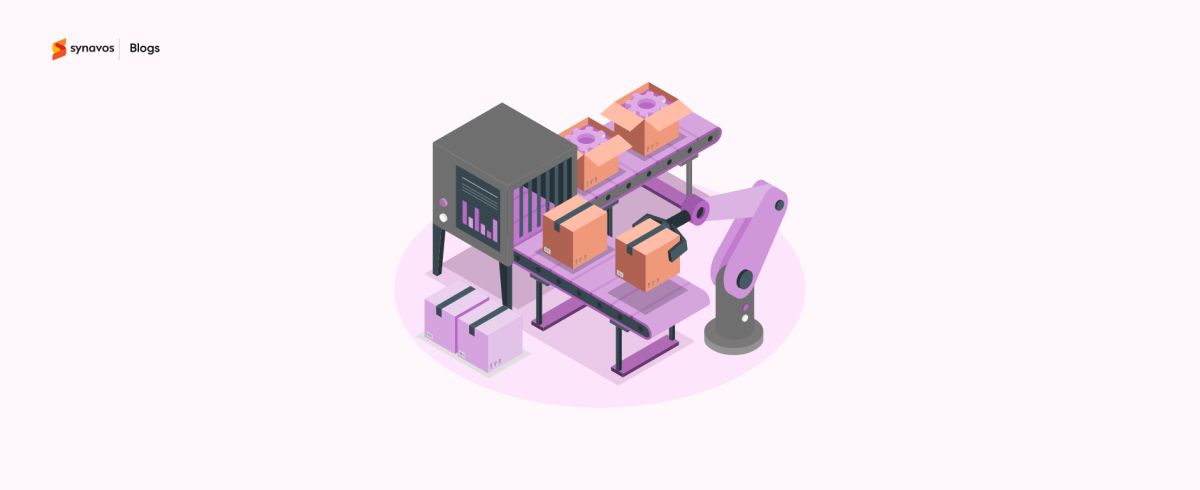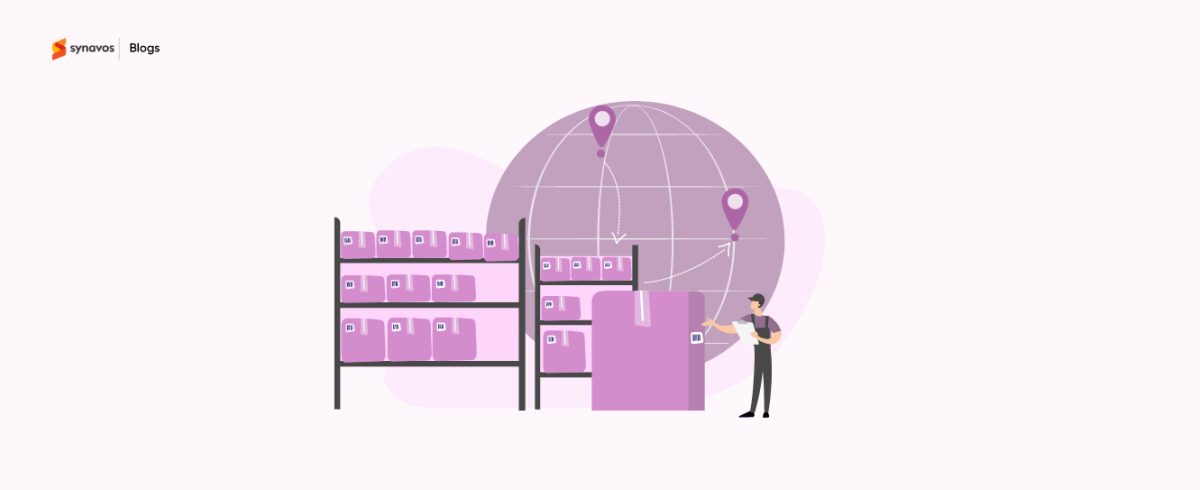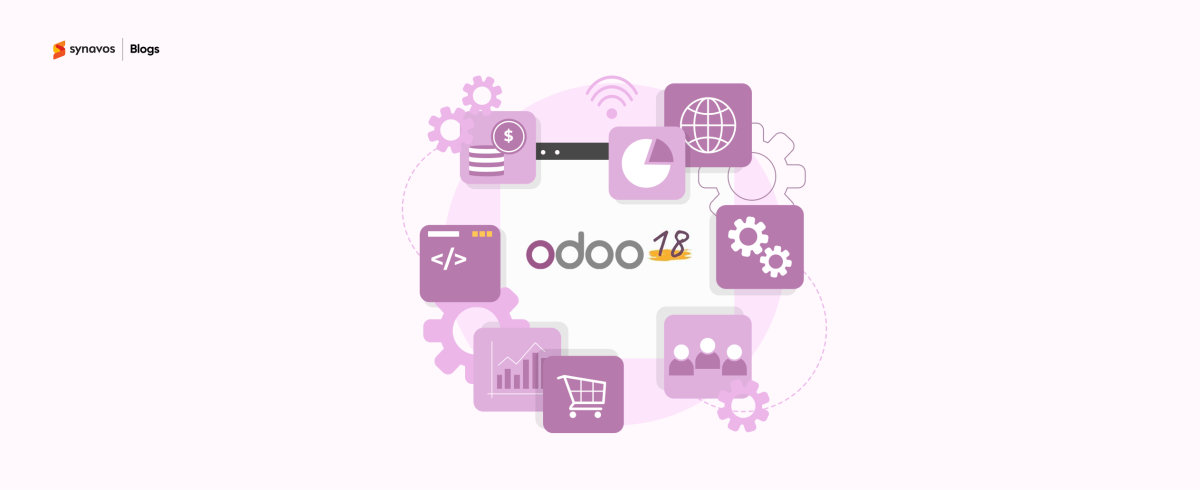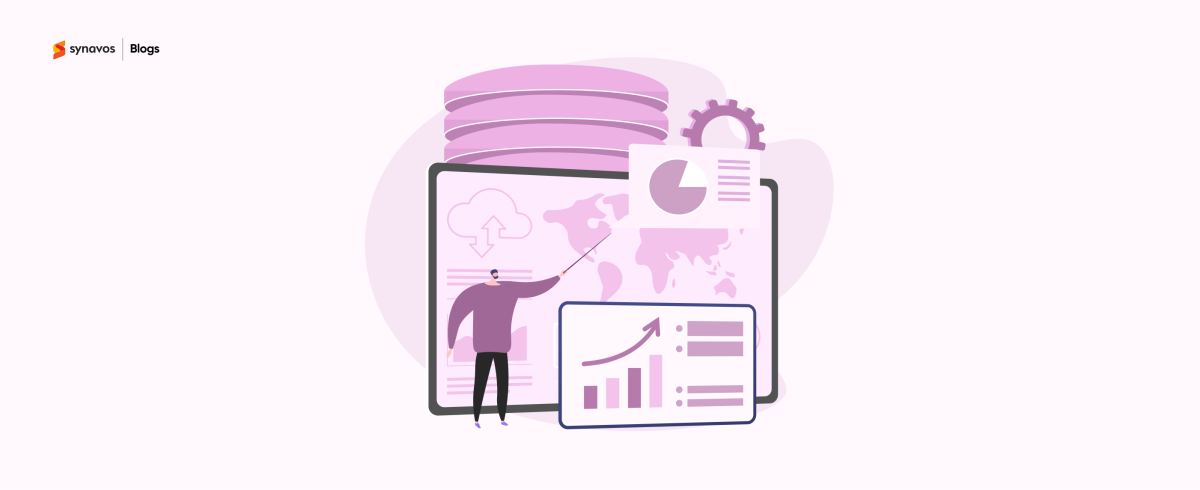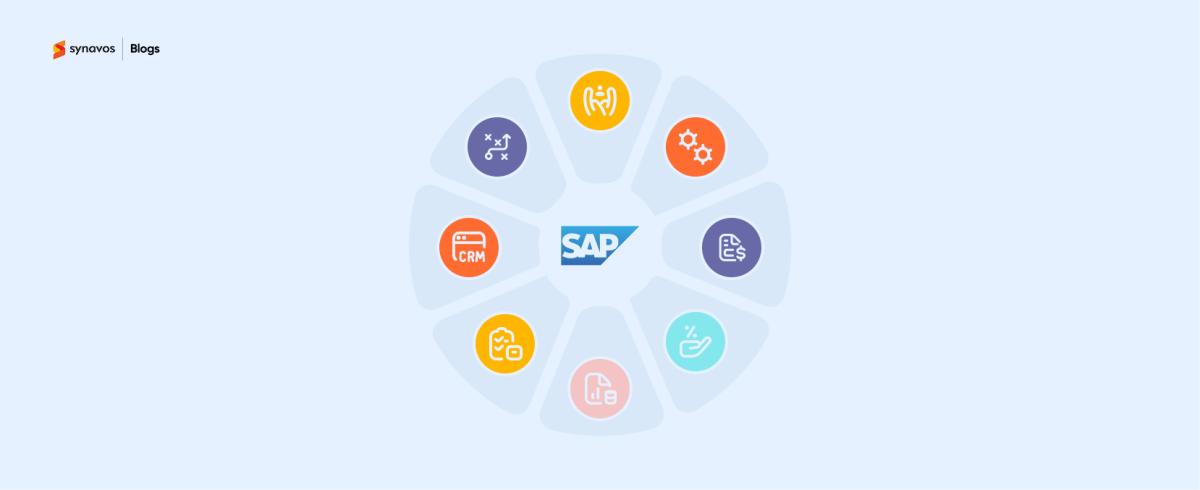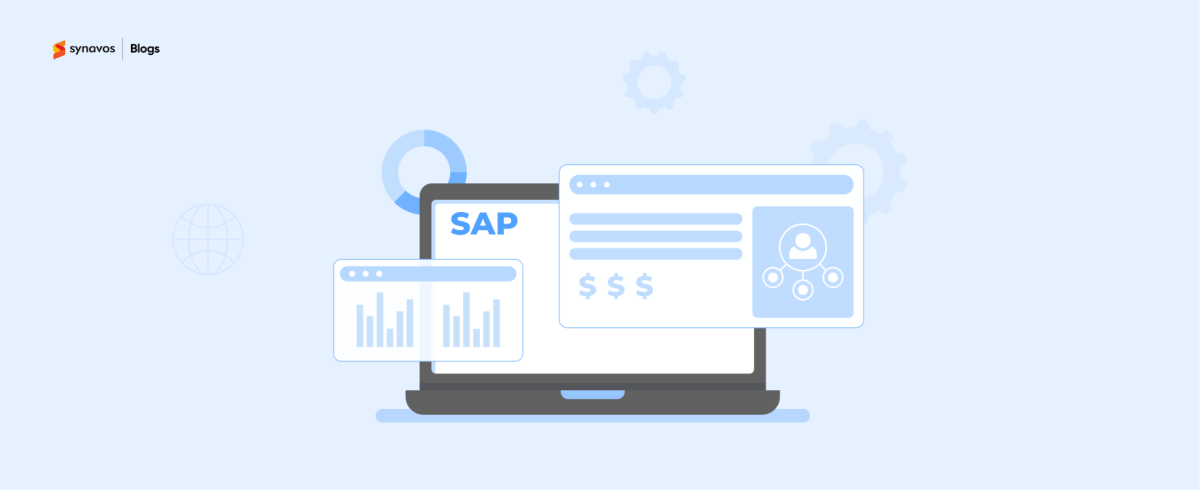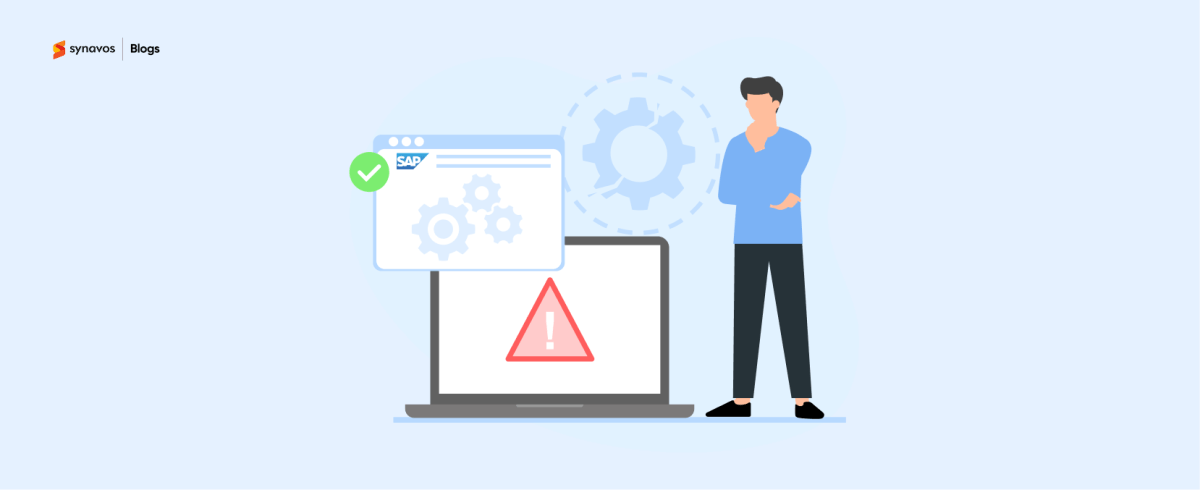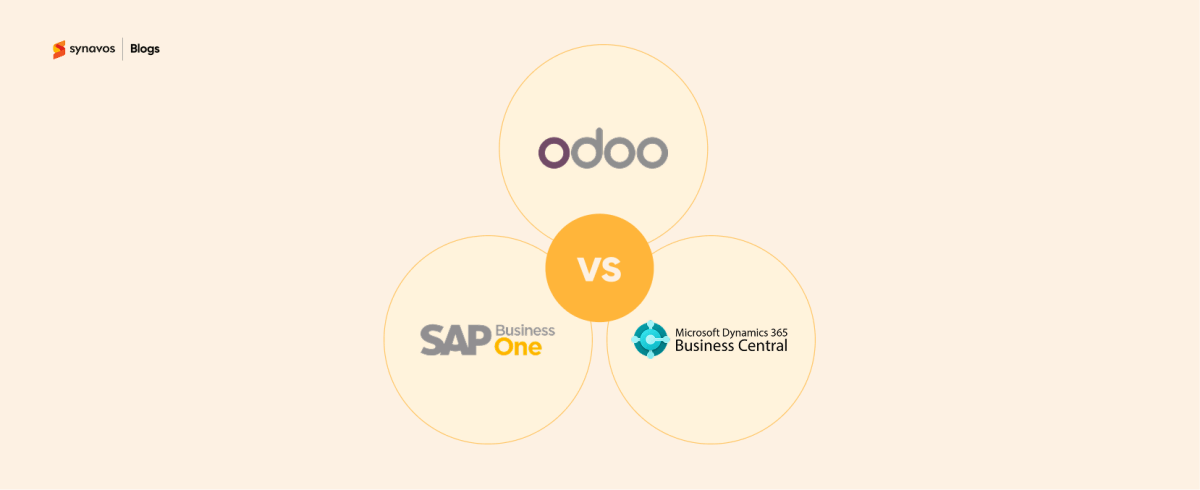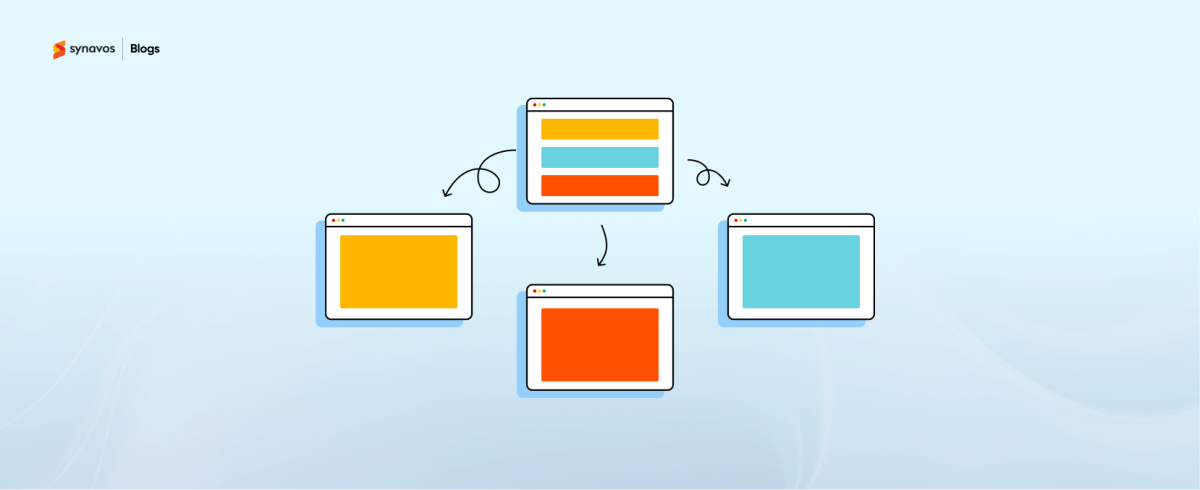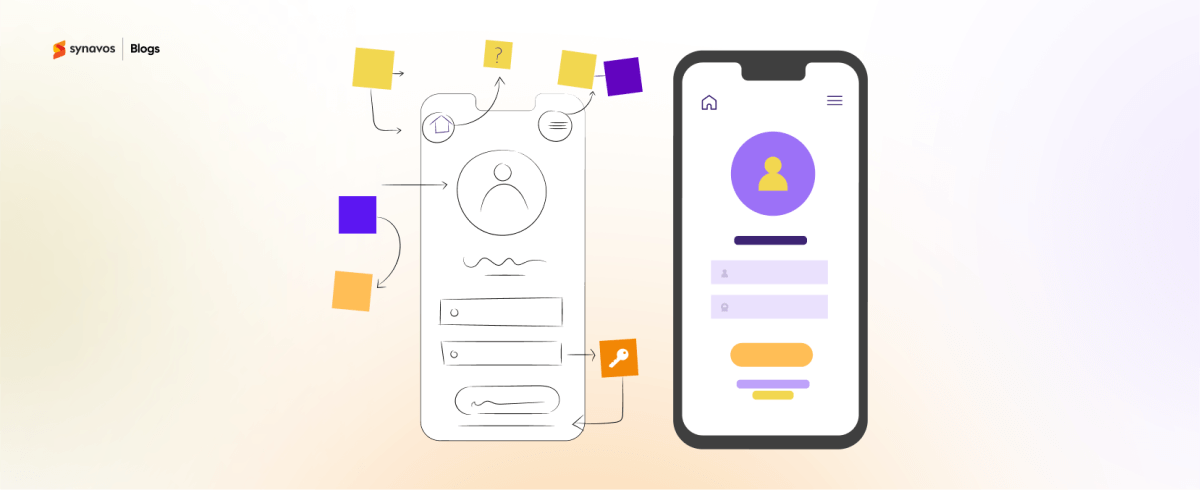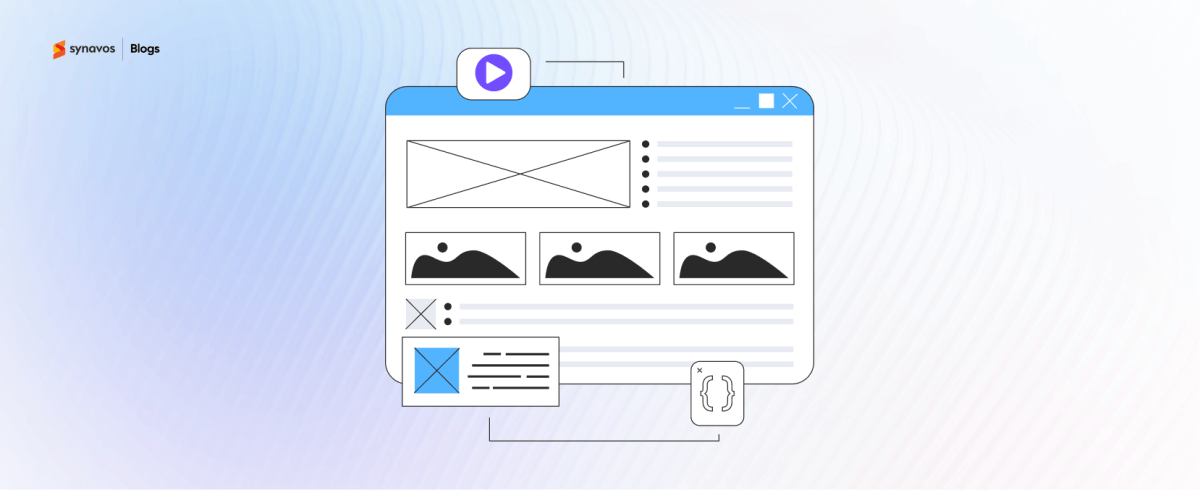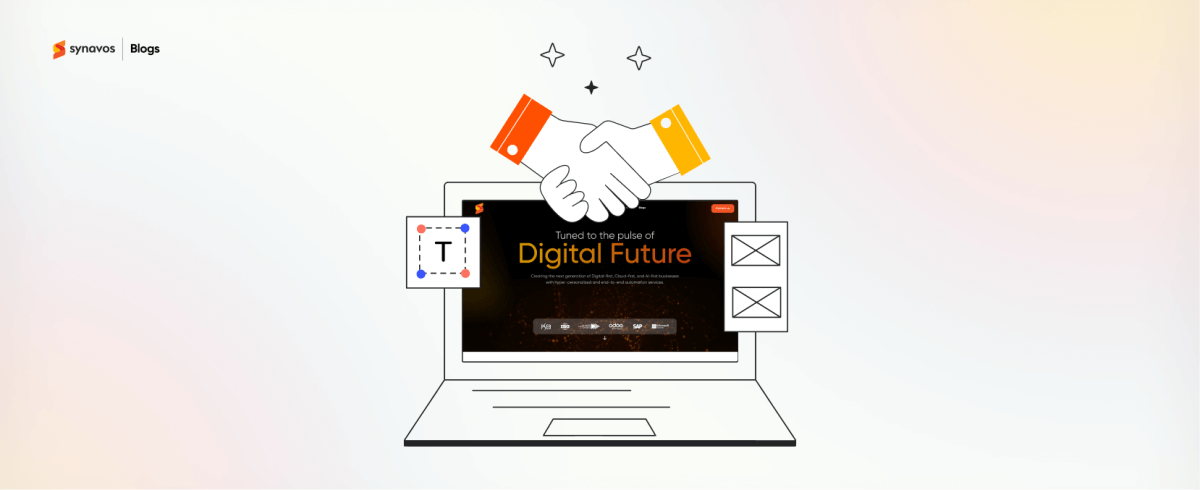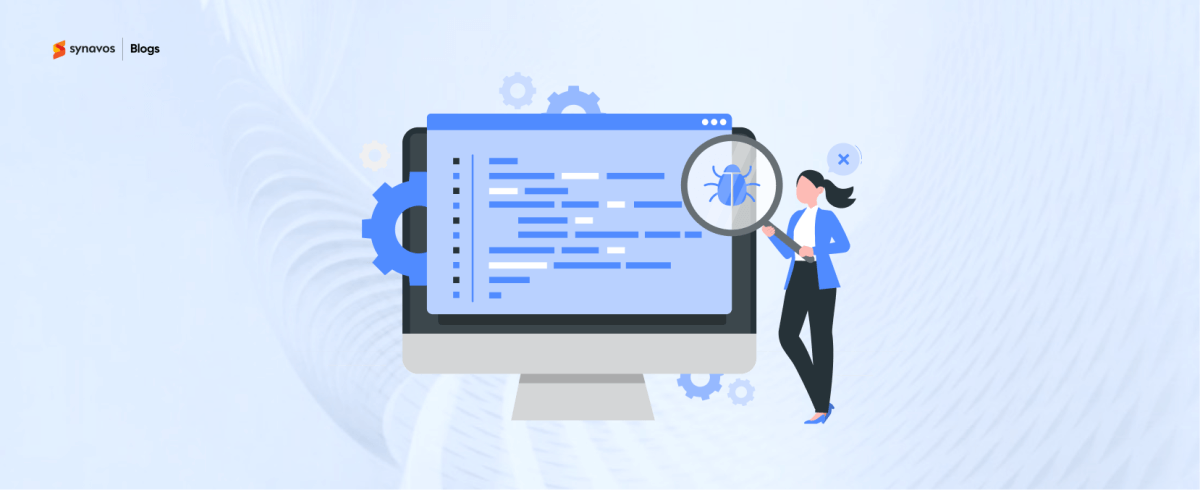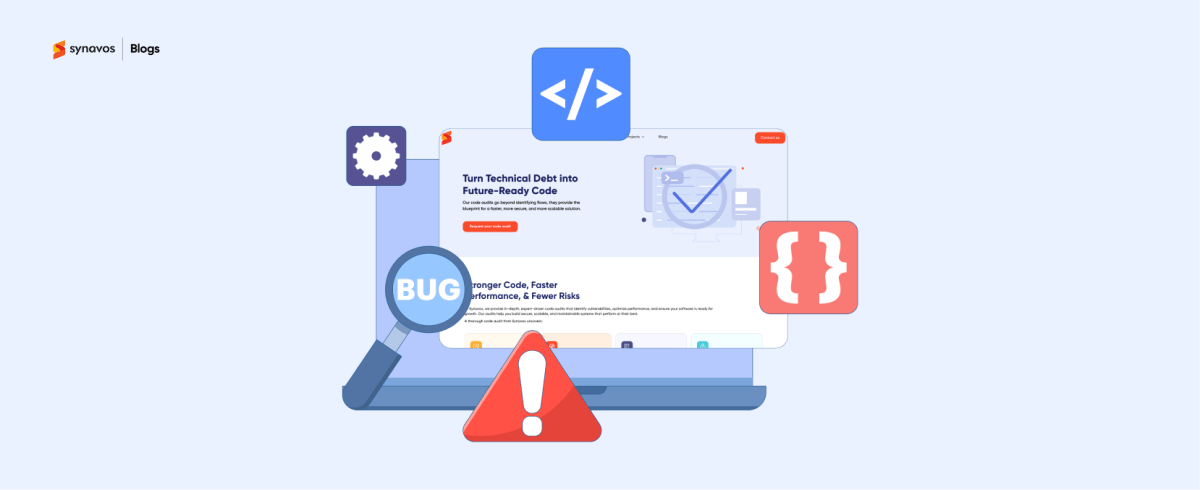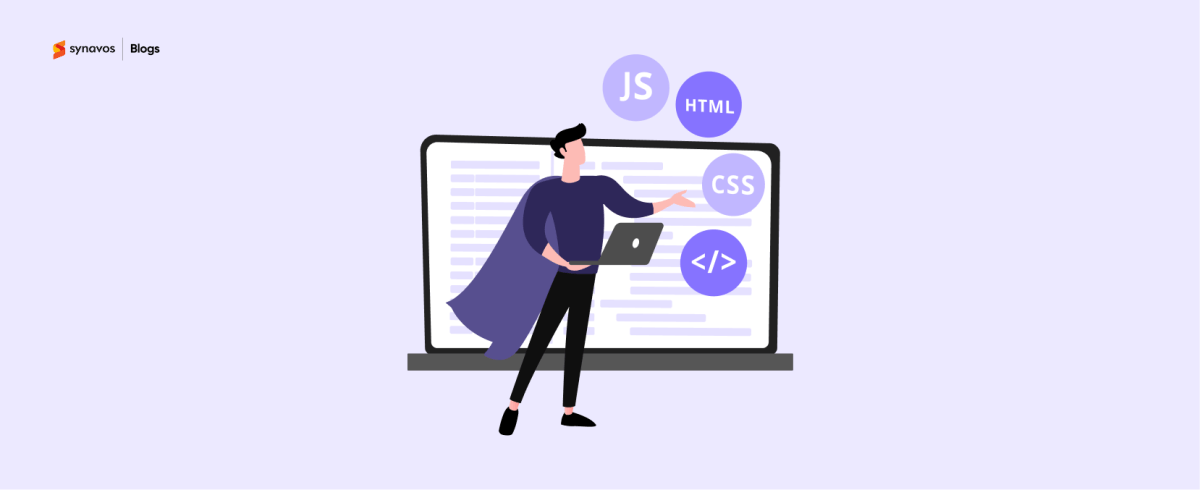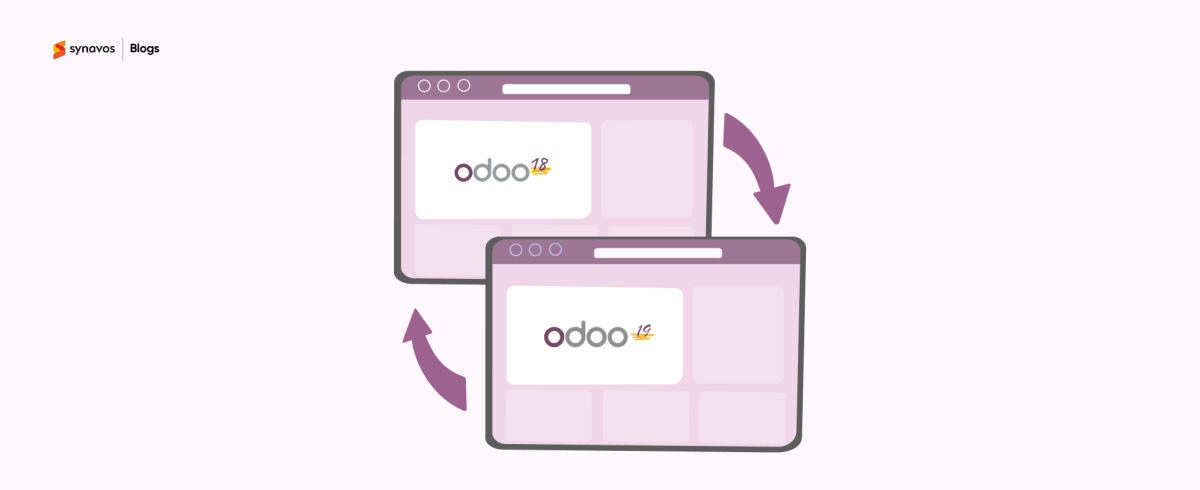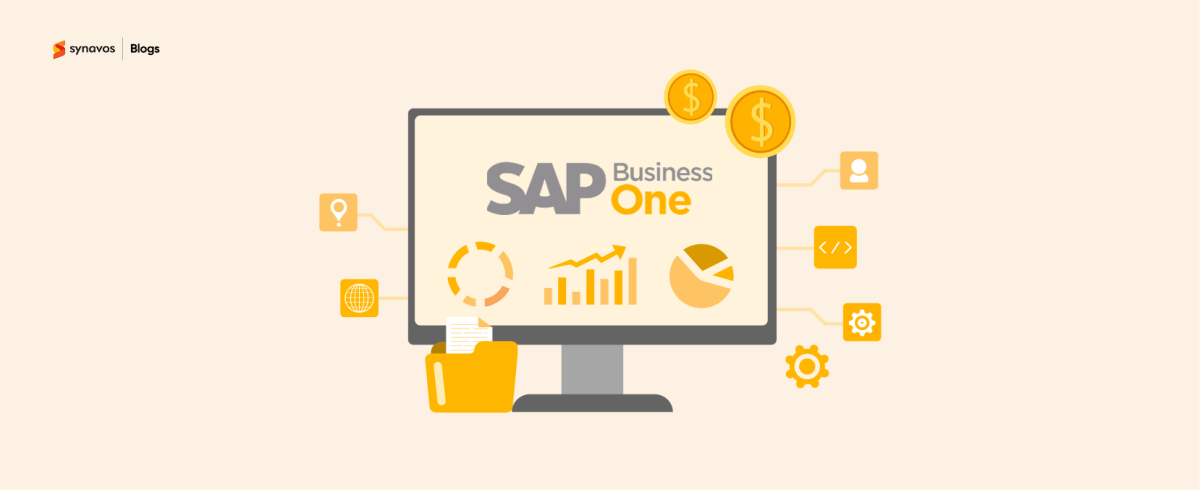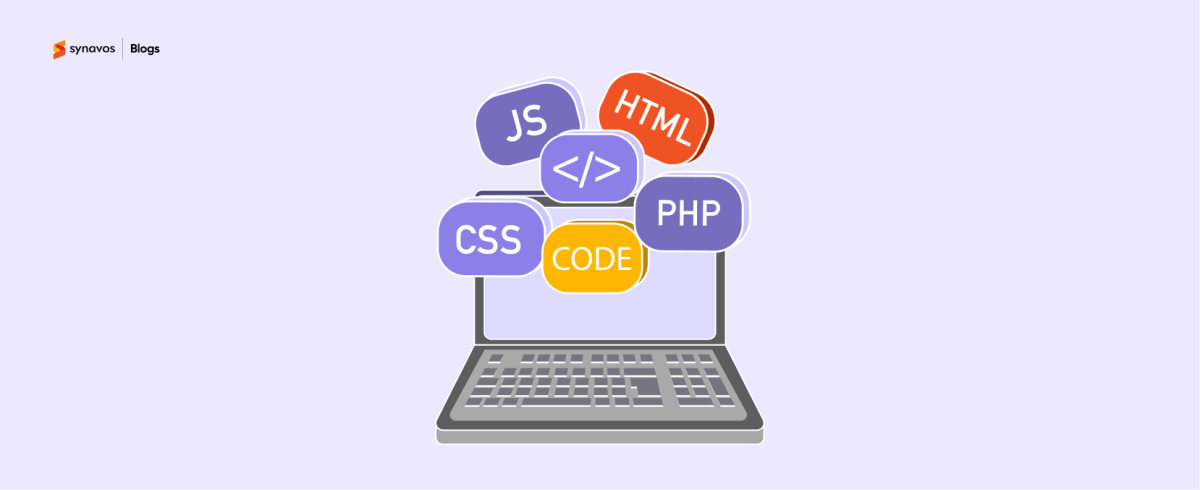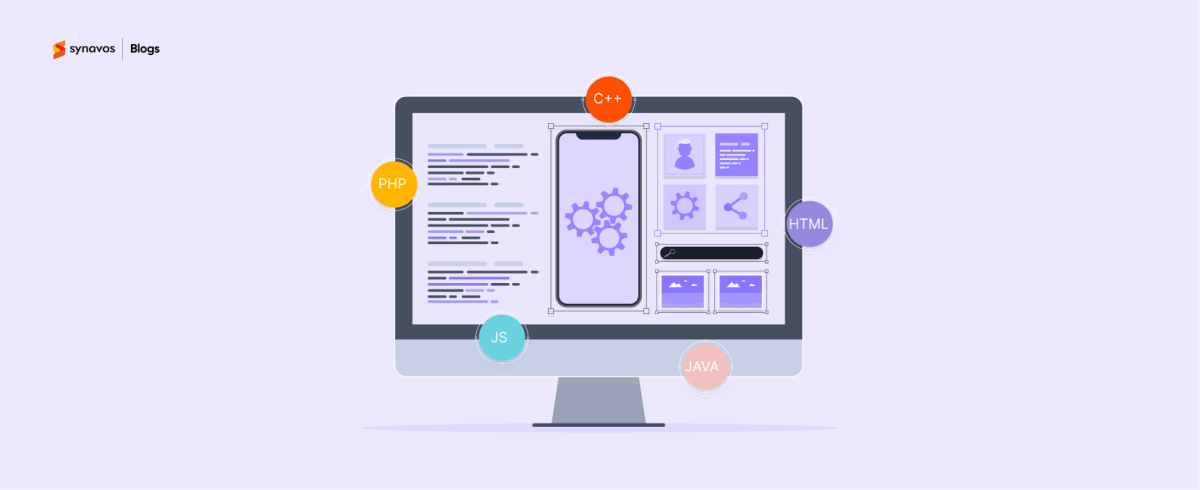When companies invest heavily into implementing an ERP system, they expect a seamless integration that streamlines operations for years to come. Sometimes, however, things don't work out as planned. Research reveals that 50% of ERP implementations fail the first time around. This can be due to various reasons, such as inadequate planning, insufficient training, or improper configuration.
However, a common cause is the incorrect implementation by the previous ERP partner. ERP re-implementation then becomes necessary to correct past mistakes and ensure that the rollout delivers the intended benefits.
In this blog, you will learn all about ERP re-implementation. From basic concepts to advanced tips, we'll cover everything you need to know for a successful ERP re-implementation.
What is ERP Re-implementation?
ERP re-implementation refers to the process of implementing an Enterprise Resource Planning (ERP) system again from scratch after an initial unsuccessful implementation. Sometimes, the first attempt at implementing an ERP system doesn't go as planned due to an array of reasons.
In such cases, instead of trying to fix the initial flawed implementation, companies decide to start over with a fresh ERP re-implementation. This involves selecting a new implementation partner, revisiting requirements, cleansing data, retraining staff, and basically treating it as a new implementation project.
ERP re-implementation provides an opportunity to reevaluate and improve business processes. This leads to increased efficiency, reduced costs, and improved customer satisfaction.
ERP Re-implementation vs. ERP Upgrade: What's the Difference?
An ERP re-implementation is a complete restart of the implementation process, while an ERP Upgrade is a periodic process to move to a newer version of the already-implemented ERP system. The key distinction lies in whether the existing ERP implementation is functional or not.
Below is a table comparing ERP upgrade vs. ERP re-implementation. It highlights the key differences between the two approaches to help you decide which option might be best for your business needs.
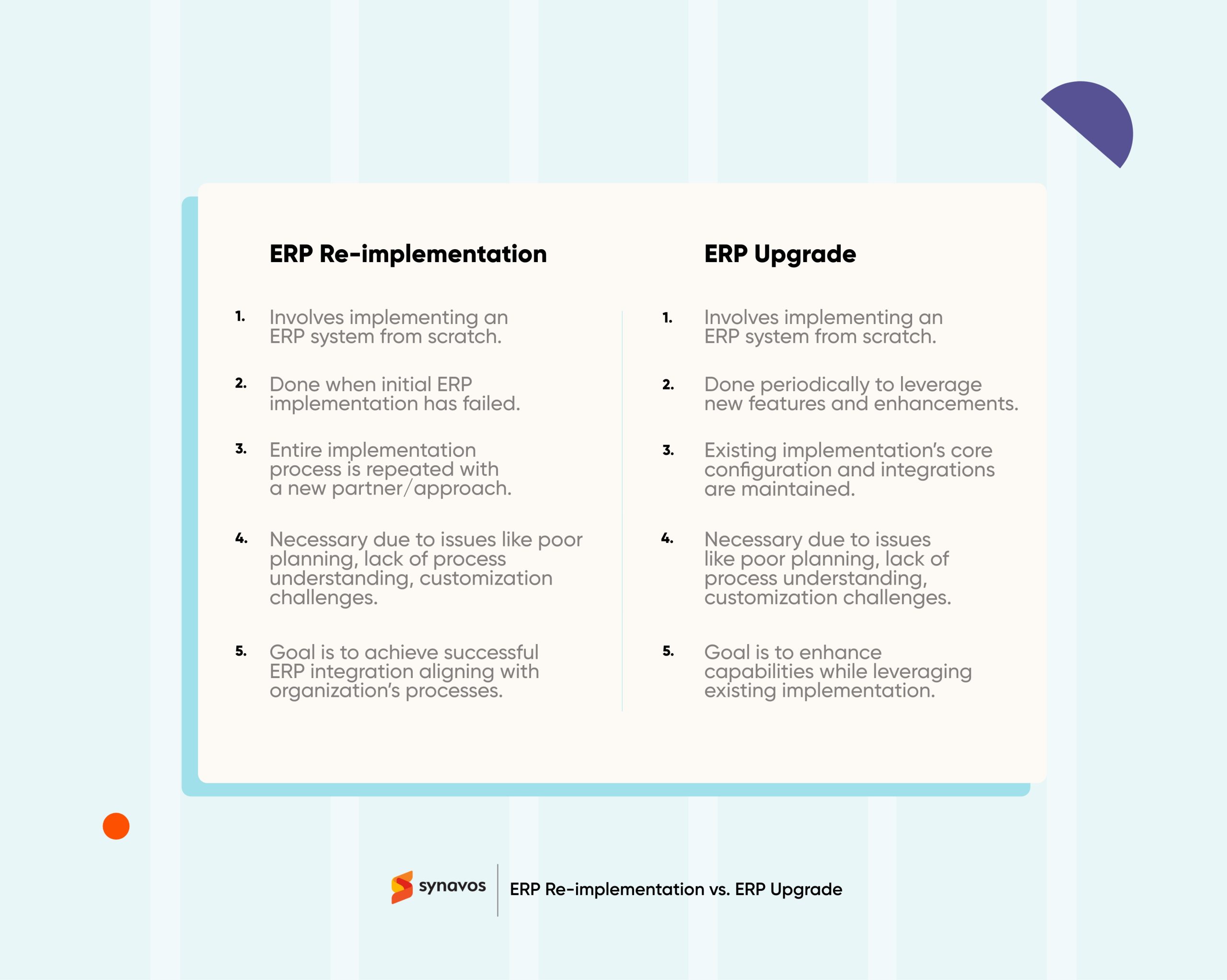
When Should You Consider ERP Re-implementation?
When it comes to optimizing your ERP system, recognizing the signs for potential re-implementation is crucial. Here's what to look for:
1. System Limitations Hindering Growth
As your organization grows, your ERP system should be able to keep up with the increased demands. However, If your current ERP system cannot accommodate new processes, handle increased data volumes, or integrate with emerging technologies, it can hinder growth.
ERP re-implementation can provide a system that is designed to support your organization's growth and provide the scalability and flexibility needed to adapt to changing business requirements.
2. System Integration Issues
Modern businesses rely on seamless integration between various software systems like ERP, CRM, e-commerce platforms, and more. However, if your current ERP system is not integrating well with these systems, it can lead to data silos, manual effort, and reduced productivity.
ERP re-implementation can provide an opportunity to improve integration and data accuracy, leading to improved productivity and efficiency.
3. Constant Customization Needs
Excessive customization requirements in your current ERP system often indicate a misalignment between the software's capabilities and your evolving business needs.
ERP re-implementation enables you to reassess your customization strategy, streamline processes, and enhance system flexibility for better alignment with your evolving needs.
4. User Frustration and Low Adoption
An ERP system's success heavily relies on user adoption. If your current system has a poor user experience, unintuitive interfaces, or lacks essential features, it can lead to user frustration and low adoption rates. Low user adoption not only wastes the investment in the ERP system but can also lead to operational inefficiencies, data inconsistencies, and a lack of visibility into critical business processes.
In such cases, re-implementing a more user-friendly and feature-rich ERP can improve adoption and maximize the return on investment.
5. Data Accuracy and Security Concerns
The data in your current ERP system is a precious business asset, and keeping it accurate and secure should be of utmost importance. If your existing ERP system is compromising data integrity, lacking proper security controls, or failing to meet necessary regulations, it's putting your company at significant risk.
Inaccurate data can lead to flawed decision-making, financial losses, and reputational damage. Similarly, security breaches or non-compliance with industry regulations can result in hefty fines, legal troubles, and loss of customer trust. Data breaches cost an average of USD 4.45 million globally in 2023, according to IBM
By re-implementing an ERP system with robust data governance, encryption, and compliance features, organizations can ensure data integrity, protect sensitive information, and maintain regulatory compliance.
6. Rising IT Maintenance Costs
As ERP systems age, maintaining and supporting them can become increasingly costly, especially if the vendor has discontinued support or if the system requires extensive customizations. In such cases, re-implementing a modern ERP solution can be more cost-effective in the long run, reducing maintenance expenses and optimizing IT resources.
Factors to Consider When Re-implementing ERP
ERP Re-implementation offers a clean slate, but requires careful planning. Here's what to consider to ensure a smooth transition:
1. Assess Your Business Needs
Starting an ERP re-implementation journey begins with a comprehensive assessment of your business needs. Conduct a thorough analysis of your current business processes, identifying areas where your existing ERP system is creating bottlenecks or falling short. Determine the specific requirements and functionalities needed to support your evolving business operations effectively. Involve key stakeholders from different departments to gather diverse perspectives and ensure alignment, as their insights will be invaluable in shaping the re-implementation strategy.
2. Evaluate Current System Capabilities
Before starting the re-implementation project, it's crucial to thoroughly evaluate the capabilities of your current ERP system. Review the features and functionality it offers, and understand the limitations and constraints that are hindering your business operations. Assess the system's scalability, integration capabilities, and ability to adapt to changing business needs. Identify any customizations or workarounds that have been implemented and their impact on system performance, as these can influence the re-implementation approach.
3. Define Re-implementation Goals
Clearly defining the goals you aim to achieve through the ERP re-implementation project is essential for its success. These goals may include improving operational efficiency, enhancing data visibility, streamlining processes, or reducing costs. Prioritize these goals based on their importance and potential positively affects your business. According to Forbes, 95% of businesses reported business process improvement after implementing an ERP system.
Ensure that your goals are specific, measurable, achievable, relevant, and time-bound (SMART), as this will help guide decision-making and measure the project's success.

4. Decide Project Scope and Budget
Determine the scope of the re-implementation project, considering factors such as the number of modules, integrations, and customizations required. Assess the level of complexity and potential risks associated with the project to develop a comprehensive plan. Develop a detailed budget that accounts for all costs, including software licenses, implementation services, training, and ongoing maintenance. Consider the potential return on investment (ROI) and long-term benefits of the re-implementation to justify the investment.
5. Select a Suitable Re-implementation Partner
Choosing the right ERP partner is crucial for a successful re-implementation project. Select a reliable and experienced partner with a proven track record in your industry. Evaluate their expertise, methodologies, and ability to understand your specific business needs. Consider factors such as their support and training offerings, post-implementation services, and long-term partnership potential. Thoroughly vet potential partners through references, case studies, and industry reputation to make an informed decision.
How Does ERP Re-implementation Process Work
A re-implementation of ERP goes through the following stages:
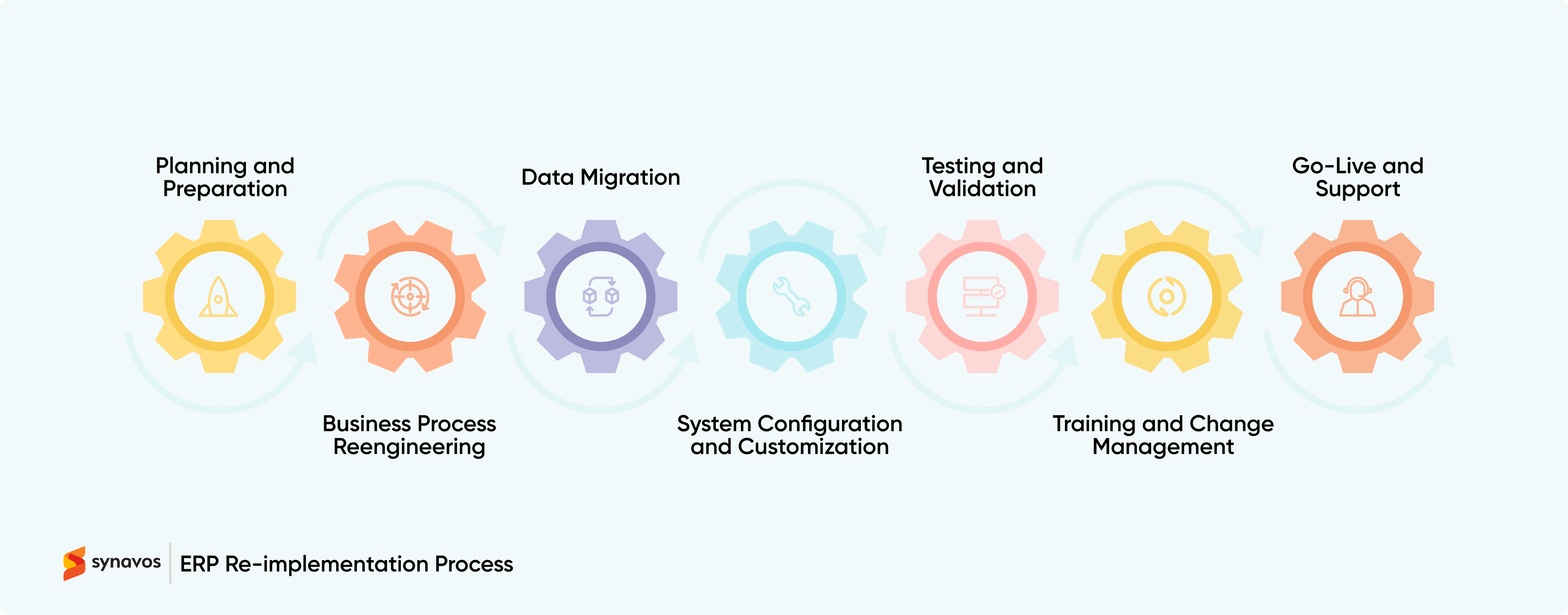
1. Planning and Preparation
The planning and preparation phase is crucial for a successful ERP re-implementation. It involves assessing the current system's shortcomings, defining project goals and objectives, and establishing a comprehensive project plan. This phase also includes selecting the right ERP solution, assembling a dedicated project team, and allocating necessary resources.
2. Business Process Reengineering
During this stage, organizations critically evaluate their existing business processes and identify areas for improvement or streamlining. This step involves mapping out current processes, identifying inefficiencies, and redesigning processes to align with best practices and the new ERP system's capabilities. Business process reengineering ensures that the re-implemented ERP solution supports optimized workflows and delivers maximum value.
3. Data Migration
Accurate and complete data migration is essential for a smooth ERP re-implementation. This phase involves extracting data from the legacy system, cleansing and validating the data, and importing it into the new ERP system. Data migration requires careful planning, testing, and execution to ensure data integrity and minimize disruptions to business operations.
4. System Configuration and Customization
The new ERP system must be configured to meet the organization's specific requirements. This phase involves setting up the system's parameters, defining user roles and access controls, and customizing the system to accommodate unique business processes or industry-specific requirements. Striking the right balance between configuration and customization is crucial to avoid excessive complexity and maintain system flexibility.
5. Testing and Validation
Thorough testing and validation are essential to ensure the re-implemented ERP system functions as intended. This phase includes various testing activities, such as unit testing, integration testing, user acceptance testing, and performance testing. Testing helps identify and resolve any issues or bugs before the system goes live, minimizing potential disruptions and ensuring a smooth transition.
6. Training and Change Management
Effective training and change management are critical for successful ERP re-implementation. This phase involves developing comprehensive training programs to equip end-users with the necessary knowledge and skills to utilize the new system effectively. Change management strategies are implemented to facilitate user adoption, address resistance, and ensure a smooth transition to the new ERP system.
7. Go-Live and Support
After extensive testing and preparation, the re-implemented ERP system is ready for deployment. The go-live phase involves carefully executing the cutover plan, transitioning from the legacy system to the new ERP solution. Post-go-live support is essential to address any issues that may arise, provide ongoing user assistance, and ensure the system operates optimally during the stabilization period.
How Does ERP Re-implementation Benefit Businesses
Following are some of the key benefits businesses gain from a successful re-implementation of their ERP system:
1. Boosted Efficiency & Productivity
ERP re-implementation offers businesses the opportunity to streamline operations and boost overall efficiency and productivity. By implementing a modern, feature-rich ERP system tailored to their specific needs, organizations can automate manual processes, eliminate redundant tasks, and optimize workflows. This leads to faster turnaround times, increased employee productivity, and improved operational excellence.
2. Improved Data Accuracy & Visibility
One of the key benefits of ERP re-implementation is enhanced data accuracy and visibility across the organization. By consolidating data from various departments and processes into a centralized system, businesses can ensure data consistency, eliminate silos, and gain real-time visibility into critical business information. This improved data accuracy and visibility enable better decision-making, more accurate reporting, and enhanced compliance with industry regulations.
3. Streamlined Processes & Workflows
During the ERP re-implementation process, businesses have the opportunity to reengineer and optimize their existing processes and workflows. By aligning processes with industry best practices and leveraging the capabilities of the new ERP system, organizations can eliminate inefficiencies, reduce redundancies, and streamline operations. This streamlining of processes and workflows leads to improved collaboration, better resource utilization, and increased agility in responding to changing market demands.
4. Enhanced User Experience & Adoption
Modern ERP systems offer intuitive user interfaces, mobile accessibility, and seamless integration with other business applications. These features contribute to an improved user experience, which can significantly increase user adoption and engagement. By providing a user-friendly environment and incorporating employee feedback during the re-implementation process, businesses can foster a culture of acceptance and maximize the return on their ERP investment.
5. Reduced IT Costs & Improved ROI
While ERP re-implementation requires an upfront investment, it can ultimately lead to reduced IT costs and improved return on investment (ROI) in the long run. By consolidating disparate systems into a unified ERP solution, businesses can reduce maintenance and support costs, eliminate redundant software licenses, and optimize their IT infrastructure. Additionally, the enhanced operational efficiencies, increased productivity, and improved decision-making capabilities enabled by the re-implemented ERP system can drive significant cost savings and revenue growth, resulting in a higher ROI.
Best Practices for an Effective ERP Re-implementation
To ensure a successful ERP re-implementation, it's crucial to follow best practices that have been proven effective in real-world scenarios. By adhering to these guidelines, you can minimize risks, optimize resources, and maximize the benefits of your re-implementation project:
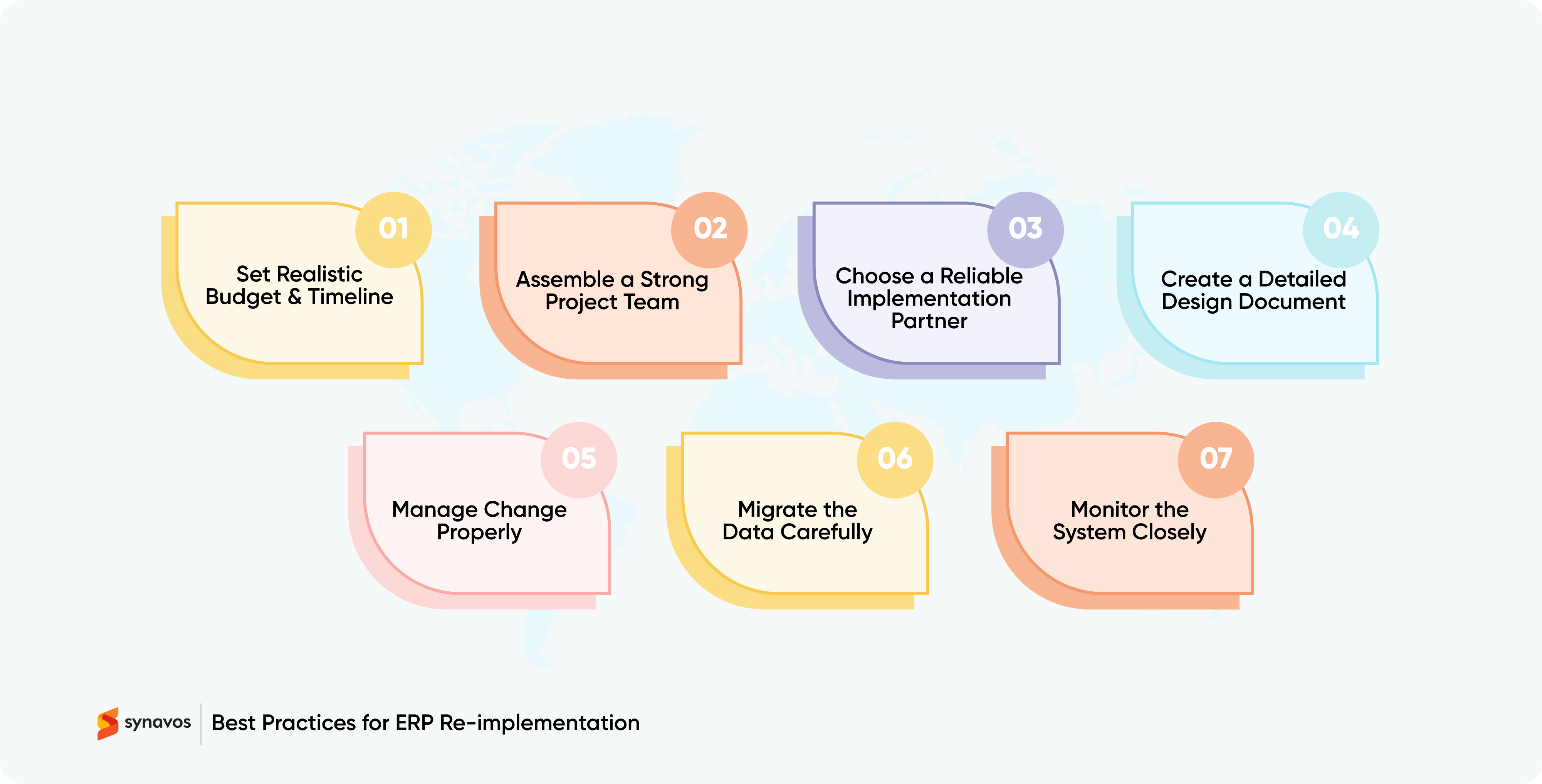
1. Set Realistic Budget & Timeline
Establishing a realistic budget and timeline is crucial for a successful ERP re-implementation project. Underestimating costs or setting unrealistic deadlines can lead to project delays, cost overruns, and potential failure. Conduct thorough research, consult experts, and factor in potential risks and contingencies to set a practical budget and timeline.
2. Assemble a Strong Project Team
A dedicated and skilled project team is essential for driving the ERP re-implementation process. Identify key stakeholders, subject matter experts, and cross-functional team members who possess the necessary technical and functional expertise. Ensure clear roles, responsibilities, and effective communication channels within the team.
3. Choose a Reliable Implementation Partner
Partnering with an experienced ERP partner can significantly contribute to the success of your re-implementation project. Look for a reputed ERP implementation company with a proven track record, industry-specific knowledge, and a deep understanding of your business processes. A reliable partner can provide valuable guidance, best practices, and support throughout the project lifecycle.
4. Create a Detailed Design Document
A comprehensive design document is a critical blueprint for your ERP re-implementation. This document should outline the system requirements, business process flows, data mapping, integrations, customizations, and testing plans. A well-documented design serves as a reference point for all project stakeholders and helps ensure alignment throughout the implementation process.
5. Manage Change Properly
ERP re-implementation often involves significant changes to business processes, workflows, and organizational culture. Effective change management is essential to minimize resistance, facilitate user adoption, and ensure a smooth transition. Develop a robust change management strategy that includes communication plans, training programs, and strategies to address potential resistance.
6. Migrate the Data Carefully
Data migration is a critical aspect of ERP re-implementation, as inaccurate or incomplete data can lead to severe operational disruptions. Establish a comprehensive data migration plan that includes data cleansing, validation, and testing procedures. Ensure data integrity and accuracy throughout the migration process to avoid potential issues during and after go-live.
7. Monitor the System Closely
Continuous monitoring and evaluation are crucial during and after the ERP re-implementation. Establish key performance indicators (KPIs) and metrics to track system performance, user adoption, and overall project success. Address any issues or concerns promptly, and make necessary adjustments to optimize the system and maximize its value for your organization.
Common Mistakes to Avoid in ERP Re-implementation
ERP re-implementation projects can be complex and challenging, and it's not uncommon for organizations to encounter pitfalls along the way. By being aware of the common mistakes that companies make during the re-implementation process, you can take proactive measures to avoid them and keep your project on track.
1. Lack of Planning and Preparation
Failing to properly plan and prepare for an ERP re-implementation can lead to numerous pitfalls and setbacks. Inadequate planning often results in unrealistic timelines, budget overruns, and a lack of clear goals and objectives. Thorough planning, including a detailed project plan, resource allocation, and risk management strategies, is crucial for a successful re-implementation.
2. Ignoring the Importance of Data Migration
Data is the lifeblood of any ERP system, and neglecting proper data migration can have severe consequences. Overlooking data cleansing, validation, and mapping can result in inaccurate or incomplete data in the new system, leading to operational disruptions, reporting errors, and potential compliance issues. A comprehensive data migration strategy is essential to ensure data integrity and minimize downtime during the transition.
3. Choosing an Inexperienced Re-implementation Partner
Partnering with an inexperienced or unqualified ERP re-implementation vendor can be a costly mistake. An inexperienced partner may lack the necessary expertise, industry knowledge, and best practices required for a successful re-implementation. Thoroughly vet potential partners, review their track record, and ensure they have the necessary resources and experience to support your project from start to finish.
4. Neglecting User Training
Inadequate user training is a common pitfall in ERP re-implementation projects. Failing to properly train end-users on the new system's functionalities, processes, and workflows can lead to low user adoption, decreased productivity, and a failure to realize the full benefits of the re-implemented ERP system. Invest in comprehensive training programs tailored to different user roles and responsibilities to ensure a smooth transition and optimal system utilization.
5. Lack of Post-Implementation Support
The re-implementation process doesn't end with go-live; ongoing support and maintenance are crucial for long-term success. Neglecting post-implementation support can lead to system performance issues, user frustration, and a failure to maximize the value of the new ERP system. Establish a dedicated support team, implement performance monitoring, and have a plan in place for ongoing system updates, enhancements, and troubleshooting.
Transform Your Business with a Successful ERP Re-implementation
ERP re-implementation is a big step, but it's one that can really pay off. Yes, it'll take work and careful planning, but the rewards - smoother operations, better insights, and a more agile business - are worth it. Remember, you're not just updating software; you're setting your company up for future success. So, take a deep breath, gather your team, and get ready to transform your business. The journey might be challenging, but the destination is worth it.








